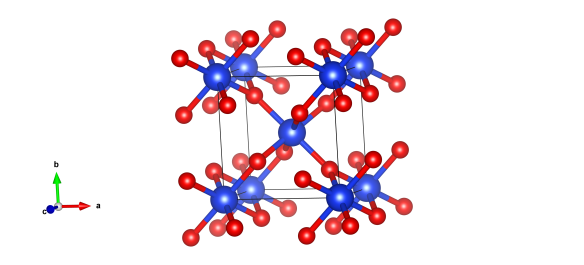Sign of an impact – Stishovite
What does it look like?

The crystal structure of stishovite. Image generated by the VESTA (Visualisation for Electronic and STructural analysis) software http://jp-minerals.org/vesta/en/.
What is it?
As we're coming up to the home straight of the Crystallography 365 project, crystal structures keep popping up that have us questioning 'how have we not done that one yet!'. Today's material, stishovite, is a further polymorph of silica but one that's extremely dense. In fact, so dense it was quickly realised that no 'Earthly' process could have formed it.
It was first made in the laboratory in 1961, within a high pressure press, by a Russian scientist called Sergey Stishov. The pressures he used to form this are so great, that the silicon atoms are forced to bond with six oxygen atoms, whereas normally they are content to be associated with four. It's actually the same structure as the rutile family of compounds.
A year later a geologist, Edward Chou, discovered the very same material in the bottom of Meteor Crater, Arizona, USA, making it a mineral which he named after Stishov. Finding stishovite in the field has now become a way of identifying sites of impact craters, as well as revealing when a 'rock' is, in fact, a meteorite.
Where did the structure come from?
The structure we've pictured comes from the determination from a piece of stishovite found in Meteor Crater, USA. It's #9007530 in the Crystallography Open Database.






